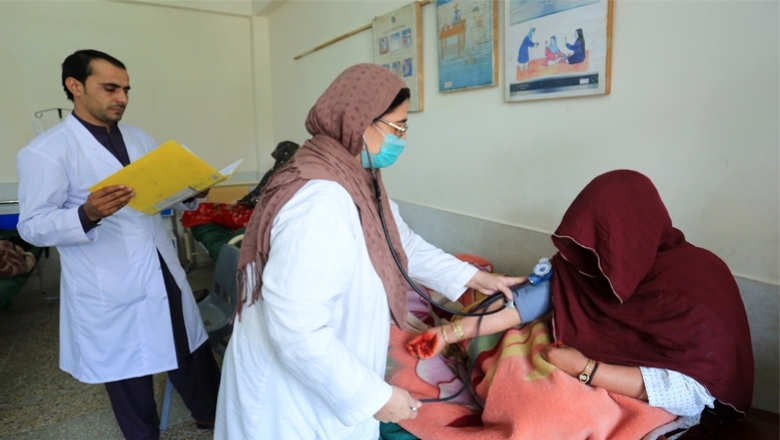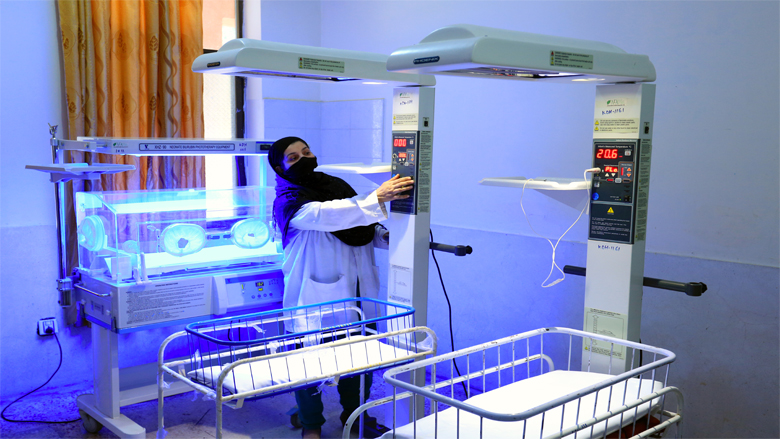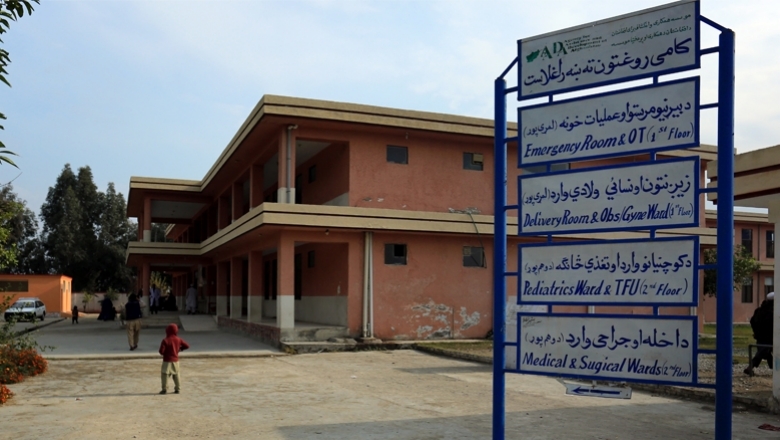KAMA DISTRICT, Nangarhar Province – Gulab Zarin had come to the Kama District Hospital for her monthly routine check-up. Her last visit to the health center was very different. “While cooking in the kitchen, I stopped breathing and my vision went dark. When I woke up, I was on a hospital bed,” says Zarin, 41, who has asthma.
On this day, the mother of five was sitting on a bed in a quiet, warm room with walls covered with informational health posters. A female doctor gently adjusted the blood pressure monitor on her arm. “. My neighbors and I are so pleased.” said Zarin, while taking a prescription from her doctor.
As the day progressed, more and more patients arrived by foot, car, and motorcycle to Kama District Hospital. , in eastern Afghanistan. The different sections of the 50-bed hospital provide services for emergencies, surgery, outpatients, nutrition, midwifery, and vaccinations, among other services. The 56-strong staff delivers health services to 700 patients daily. On average, 400 newborns are delivered, and more than 170 minor operations are carried out each month.
Kama District Hospital, established in 2009, was one of over 100 health facilities in Nangarhar province that provides a Basic Package of Health Services (BPHS) under the Ministry of Public Health’s (MoPH) System Enhancement for Health Action in Transition (SEHAT) program. From January 2014 – June 2018, the Agency for Assistance and Development of Afghanistan (AADA), a nongovernmental organization, implemented the SEHAT program in the 22 districts of Nangarhar province under the overall stewardship of the MoPH.
Closed in June 2018, SEHAT aimed to expand the scope, quality, and coverage of health services provided to the population, particularly vulnerable groups. It was supported by the International Development Association (IDA), the World Bank Group’s fund for the poorest countries, and the Afghanistan Reconstruction Trust Fund (ARTF), administered by the World Bank on behalf of 34 donors.
The improvement in delivery of BPHS and EPHS will continue under MoPH’s Afghanistan Sehatmandi Project, which came into effect in July 2018. The project aims to increase the utilization and quality of health, nutrition, and family planning services across the country. It works to strengthen the health system and its performance, as well as to increase demand and community accountability for key health services. The project is supported by the ARTF, IDA, and the Global Financing Facility (GFF), a multi-stakeholder partnership that prioritizes high impact but underinvested areas of health.




